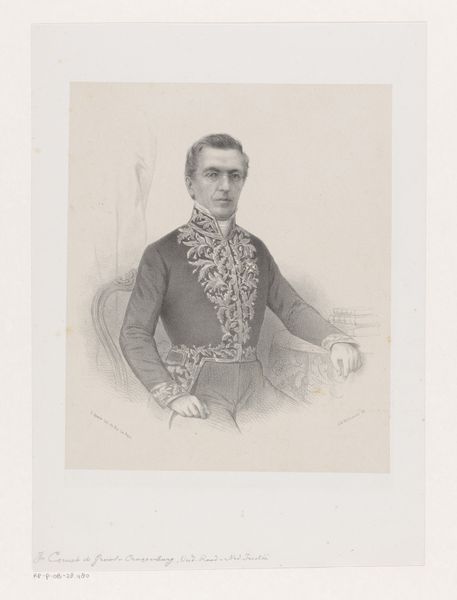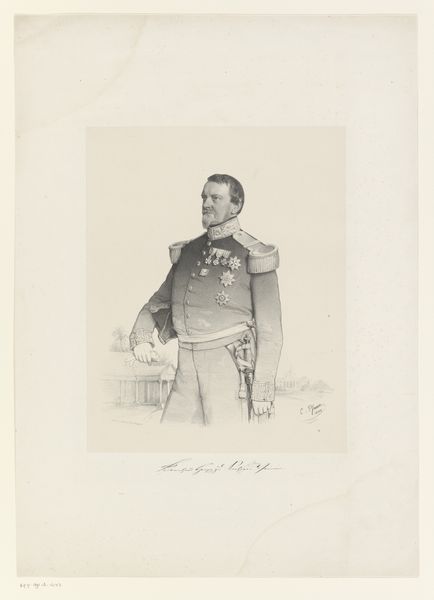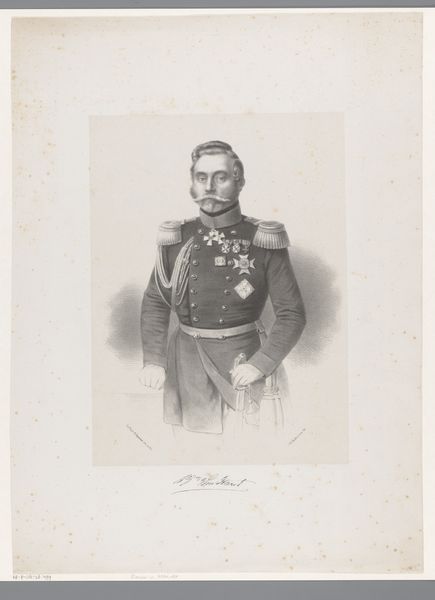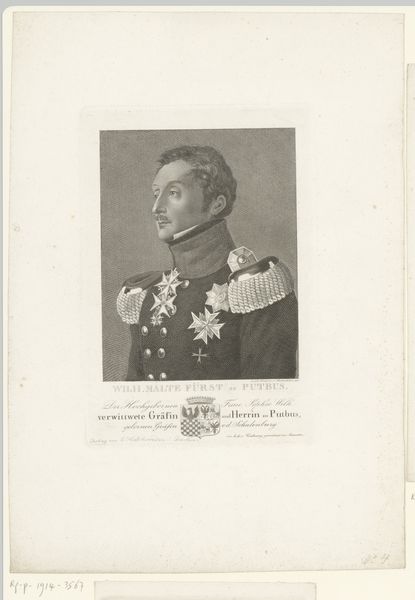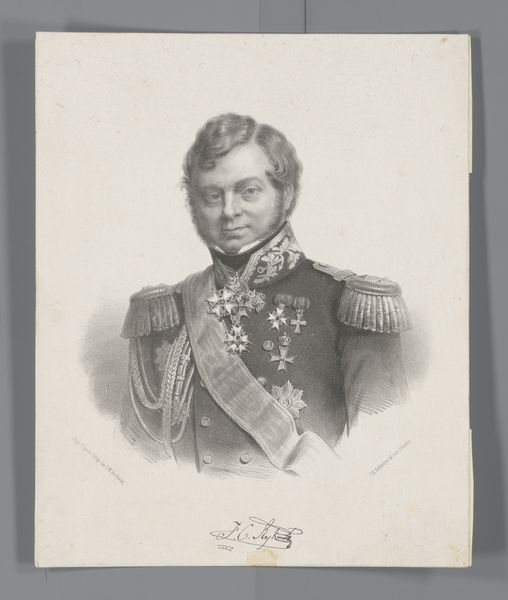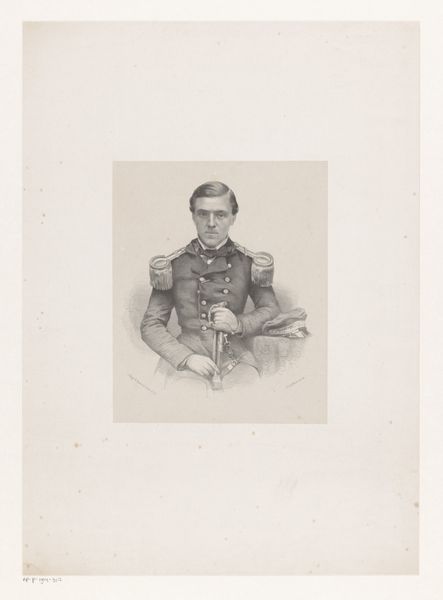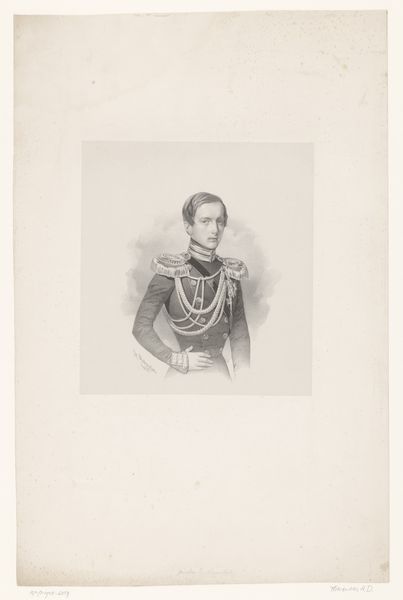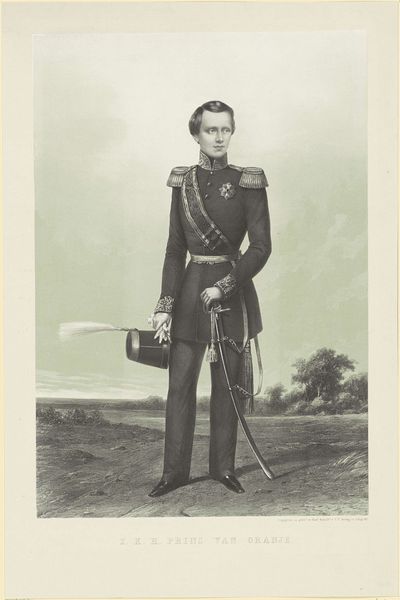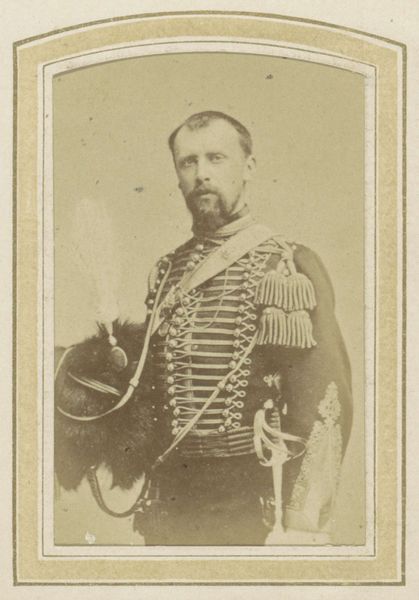
Portret van een onbekende man, mogelijk de heer Bakker c. 1851 - 1883
0:00
0:00
Dimensions: height 455 mm, width 307 mm
Copyright: Rijks Museum: Open Domain
Curator: Good morning. Let's delve into this print, dating from somewhere between 1851 and 1883. It's titled "Portret van een onbekende man, mogelijk de heer Bakker," meaning "Portrait of an unknown man, possibly Mr. Bakker," created by Johan Hendrik Hoffmeister. Editor: Well, he certainly looks every bit the esteemed figure, doesn't he? Stern gaze, immaculate uniform, it feels distinctly posed, controlled. A man presenting himself to the world, and not just in any clothes, but in the attire of rank. Curator: Exactly. Let's break it down structurally. The composition follows a classical format. Note the artist’s attention to symmetry, the rigid posture, and the careful placement of his accessories to draw the eye. Consider also how the neutral background works to amplify the presence of the subject. Editor: But those details speak of more than simple form. Think of the time, resources, and labour required to produce this likeness. It's a photograph translated into a print— a material act in a period when portraiture itself was changing drastically with the rise of photographic reproduction. What does it say about social mobility that even a 'possible' Mr. Bakker had access to these modes of representation? Curator: Precisely, it mirrors a society grappling with industrialization. The print as a medium enables the reproduction of the photographic image, thereby extending the visual impact to a broader audience. Notice how Hoffmeister utilized the print medium's capacity for nuanced gradations, emulating photographic detail while lending it an artistic air through carefully worked hatching. Editor: And those carefully worked details hint at Romanticism’s flair for dramatic portraiture, even as Realism attempts a supposedly unvarnished view of individuals within their societal context. He's caught between self-fashioning and documentarian impulse; we sense something complex within his gaze that surpasses mere image making. I find myself wondering who the actual Mr. Bakker was, the man behind this public display. Curator: It presents an engaging study in artistic intention versus reception, then. The visual vocabulary offers a rich understanding of an era in flux. Editor: I agree. The layers here unveil a story far beyond one gentleman’s image. The material echoes the social fabric in all its intricacy and ambition.
Comments
No comments
Be the first to comment and join the conversation on the ultimate creative platform.
